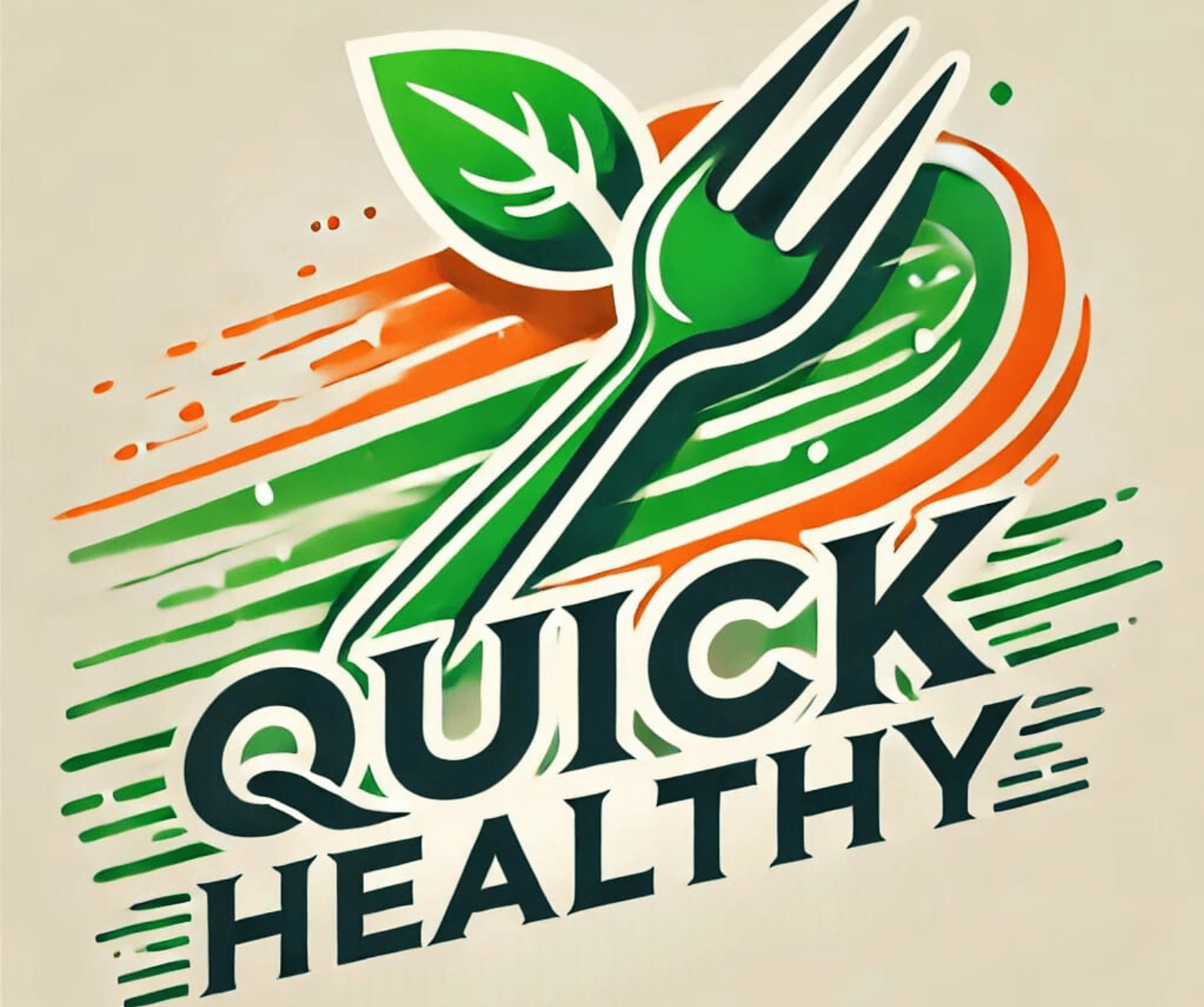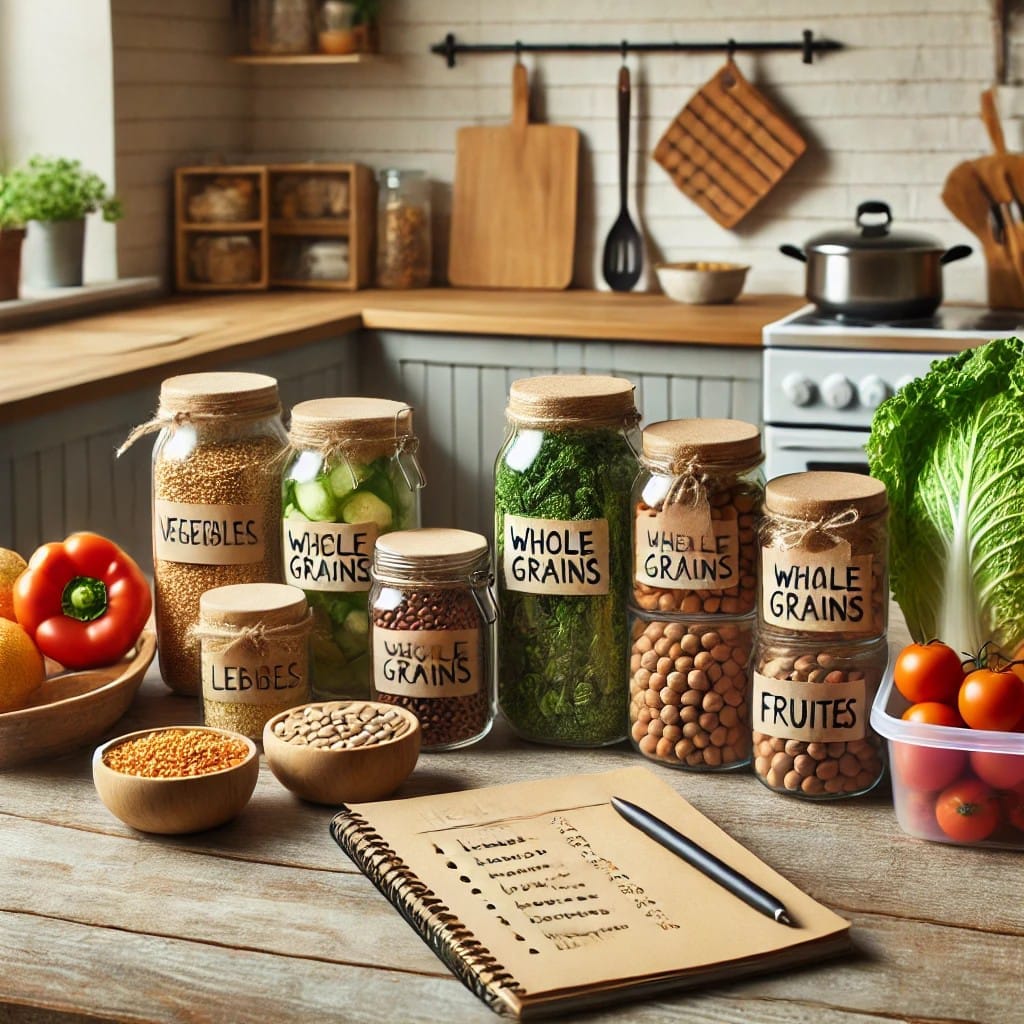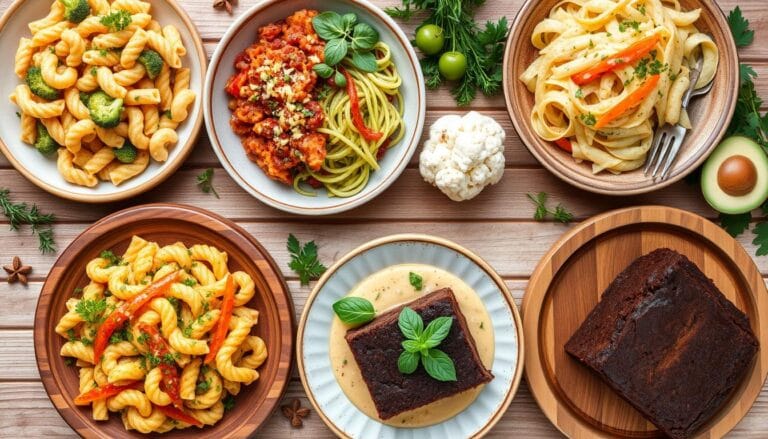10 Tips for Eating Healthy on a Budget :
Eating healthy on a budget can be tough, but it’s doable. You can keep your diet nutritious without spending too much. Many struggle to eat well when money is tight. This article will give you tips on eating healthy without breaking the bank.
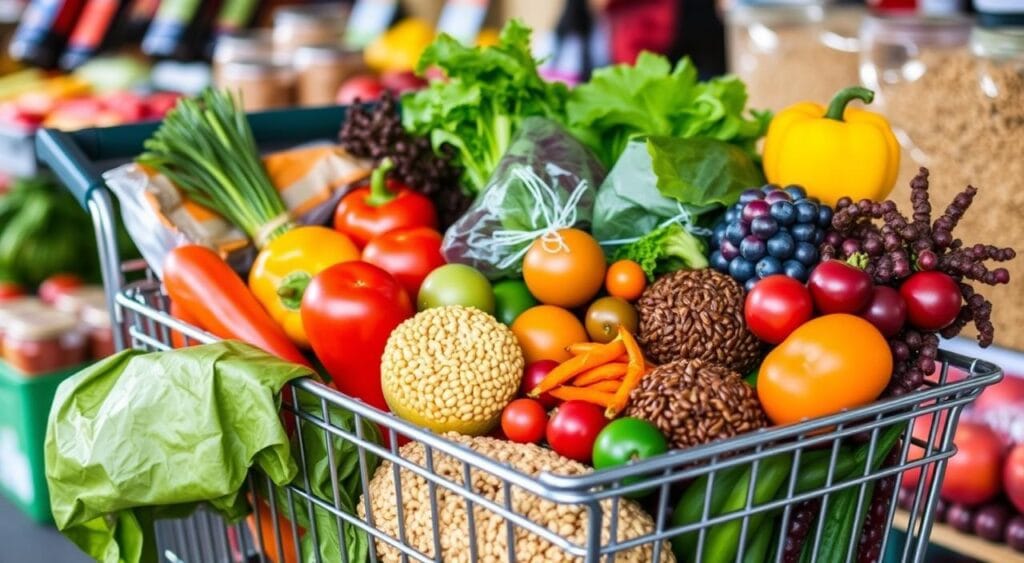
Discover how to choose healthy foods without spending a lot. Eating well on a budget takes some planning, but it’s possible. You’ll see why affordable healthy eating is key for your health.
Table of Contents
10 Tips for Eating Healthy on a Budget :
Understanding the Basics of Eating Healthy on a Budget
Eating healthy doesn’t have to break the bank. With smart strategies, you can enjoy nutritious meals without spending too much. Embracing budget-friendly nutrition is not only possible but also good for your health and wallet.
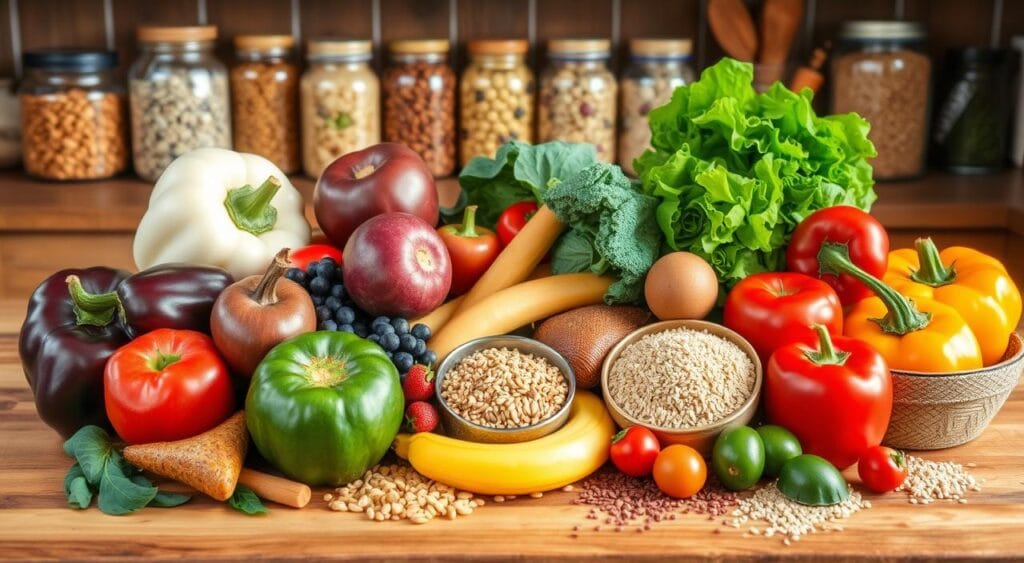
Why Healthy Eating Doesn’t Have to Be Expensive
Many think healthy food costs more, but it’s not always true. Foods like beans, rice, and seasonal veggies are both cheap and healthy. By planning meals around these items, you can make low cost healthy meals without sacrificing quality.
Common Misconceptions About Healthy Food Costs
There are several myths about the cost of healthy eating:
- Organic foods are always more expensive
- Healthy ingredients are rare and hard to find
- Nutritious meals require elaborate recipes
By clearing up these myths, you can make better choices that fit your diet and budget.
The Long-term Benefits of Nutritious Eating
Investing in budget-friendly nutrition has long-term benefits. Eating healthier can save you money on medical bills and boost your energy. Over time, sticking to low cost healthy meals improves your life and saves money.
| Benefit | Description |
|---|---|
| Cost Savings | Lower grocery bills by choosing affordable, nutritious ingredients. |
| Health Improvement | Reduced risk of chronic diseases through balanced eating. |
| Energy Levels | Better nutrition leads to increased daily energy and productivity. |
| Long-term Financial Health | Fewer medical expenses related to diet-related illnesses. |
Smart Meal Planning Strategies
Effective budget meal planning starts with organizing your weekly meals. Begin by creating a meal calendar that outlines what you’ll eat each day. This approach helps you stay focused and reduces the chances of last-minute, expensive choices.
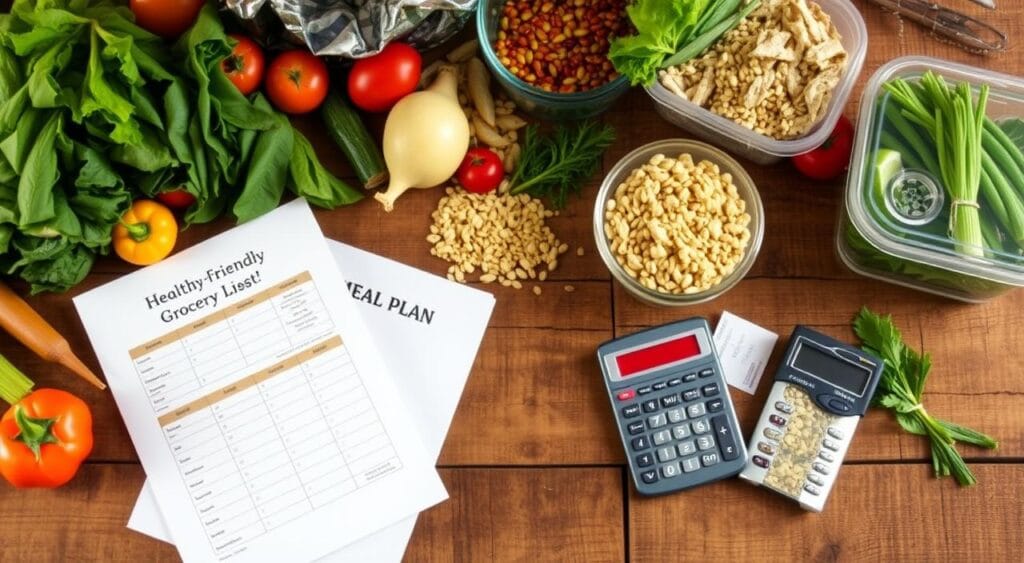
Use ingredients across multiple meals to minimize waste. For example, buy a batch of chicken breasts and use them in salads, wraps, and stir-fries throughout the week. This not only saves money but also ensures you use all your groceries efficiently.
Keep an eye on sales and seasonal produce to maximize your savings. Choose fruits and vegetables that are in season, as they are typically more affordable and fresher. Planning your meals around these items can significantly reduce your grocery bill.
Here are some steps to enhance your meal planning:
- Create a detailed meal plan for the week.
- Make a comprehensive shopping list based on your meal plan.
- Check your pantry for existing ingredients to avoid unnecessary purchases.
- Plan meals that share common ingredients to simplify shopping and cooking.
By implementing these healthy eating tips for cheap, you can enjoy nutritious meals without straining your budget. Consistent meal planning empowers you to make smarter choices and achieve your health goals affordably.
The Art of Strategic Grocery Shopping
Learning how to shop for groceries smartly can help you live healthier and save money. By planning your shopping trips well, you can eat well without spending too much.
Best Days to Shop for Deals
Shopping on certain days can get you better deals. Stores often have sales mid-week when it’s less busy.
- Tuesday and Wednesday are usually the best days for deals.
- Look for weekly specials starting on these days.
Understanding Store Layouts and Pricing
Stores are designed to make you spend more. Knowing where to find what you need can help you avoid buying things you don’t need.
- Start by shopping the perimeter for fresh foods.
- Avoid the center aisles with more expensive items.
Maximizing Store Rewards Programs
Joining store rewards programs can help you save more on frugal healthy eating.
- Sign up for loyalty cards to get special discounts.
- Use store apps to track and use your rewards.
“Strategic shopping not only saves money but also promotes healthier eating habits.”
| Store Type | Benefits for Economical Healthy Living |
|---|---|
| Discount Grocers | Lower prices on bulk items and staples. |
| Farmers’ Markets | Fresh, seasonal produce often at competitive prices. |
| Warehouse Clubs | Bulk buying opportunities for non-perishable healthy foods. |
Seasonal Produce Selection Guide
Choosing the right fruits and vegetables each season is key. It helps you get affordable, nutritious foods. Plus, you get freshness and flavor in your meals.
Spring and Summer Produce Options
- Strawberries
- Asparagus
- Cucumbers
- Tomatoes
- Peaches
Fall and Winter Budget-Friendly Choices
- Apples
- Pumpkins
- Sweet Potatoes
- Brussels Sprouts
- Kale
| Season | Produce | Tips for Incorporation |
|---|---|---|
| Spring | Strawberries, Asparagus | Add strawberries to salads or grill asparagus as a side dish. |
| Summer | Cucumbers, Tomatoes, Peaches | Use cucumbers in sandwiches, make fresh tomato salsa, or enjoy peaches as a snack. |
| Fall | Apples, Pumpkins | Bake apples for dessert or use pumpkin in soups and pies. |
| Winter | Sweet Potatoes, Brussels Sprouts, Kale | Roast sweet potatoes and Brussels sprouts or add kale to hearty stews. |
Bulk Buying Benefits and Best Practices
Buying in bulk is a smart way to eating healthy on a budget. It lets you get more for less, saving money on healthy foods. Foods like rice, beans, and oats are great for buying in bulk.
Keeping food fresh is important. Use airtight containers and mark items with when you bought them. This helps keep food from going bad and ensures you use it before it’s too late.
- Choose Whole Foods: Foods like whole grains, nuts, and seeds last longer.
- https://www.quick-healthy.com/10-tips-for-eating-healthy-on-a-budget/Plan Your Meals: Use bulk items in your meal plans to avoid waste.
- Calculate Savings: Check if buying in bulk really saves you money by comparing prices.
Don’t buy too much by making a shopping list. This helps you stick to affordable healthy eating without spending too much.
Making the Most of Your Freezer
Using your freezer smartly can change how you eat on a budget. Storing food right keeps your meals fresh and full of nutrients.
Proper Food Storage Techniques
Keep your meals fresh by using airtight containers or freezer bags. It’s also smart to label each package with the date. This way, you know what to eat first, cutting down on waste and saving money.
Batch Cooking and Freezing Tips
Cooking big batches of food saves time and money. Cook a lot, portion it out, and freeze it right away. This approach makes mealtime simpler and keeps healthy food ready for you.
Best Foods for Freezing
- Vegetables: Broccoli, spinach, and peas freeze well and keep their nutrients.
- Proteins: Chicken breasts, ground turkey, and beans are great for freezing.
- Grains and Legumes: Cooked rice, quinoa, and lentils stay good after freezing.
By smartly using your freezer, you can enjoy many low cost healthy meals. You won’t have to give up on taste or nutrition.
Budget-Friendly Protein Sources
Keeping a balanced diet doesn’t have to cost a lot. By choosing affordable protein sources, you can live healthy without spending too much. Here are some great options:
- Beans and Lentils: These plant-based proteins are both cheap and versatile. They’re full of fiber and important nutrients.
- Tofu: A fantastic meat substitute, tofu is affordable and takes on flavors well. It’s great for many dishes.
- Eggs: Eggs are a complete protein and can be used in many recipes. They offer flexibility and value.
- Canned Fish: Tuna and salmon are affordable and full of protein and omega-3s.
When buying these proteins, look for sales and buy in bulk to save more. Keep beans in airtight containers or freeze tofu to make them last longer. Try simple recipes like bean salads, tofu stir-fries, or egg dishes. These healthy eating tips for cheap help you stay healthy without spending a lot.
Smart Ways to Reduce Food Waste
Reducing food waste is key for frugal healthy eating. By using what you buy wisely, you can enjoy inexpensive nutritious foods without wasting money.
Creative Leftover Usage
Turn leftovers into tasty new meals with these tips:
- Soups and Stews: Mix leftover veggies and proteins for a warm soup.
- Wraps and Sandwiches: Add leftover meats and veggies to wraps or sandwiches for a fast meal.
- Stir-Fries: Combine leftover items for a healthy stir-fry.
- Salads: Refresh leftovers by adding them to salads with a light dressing.
Storage Solutions for Extended Shelf Life
Proper storage keeps foods fresh longer, cutting down on waste and saving cash:
- Use Airtight Containers: Store leftovers in airtight containers to keep them fresh.
- Label and Date: Label and date your stored foods to track their freshness.
- Freeze Appropriately: Freeze items like bread, meats, and some veggies to extend their life.
- Organize Your Fridge: Store fruits and veggies in specific spots to avoid spoilage.
By using these tips, you can cut down on food waste. This supports your path to frugal healthy eating with inexpensive nutritious foods.
Time-Saving Meal Prep Techniques
Efficient meal prepping can change your weekly routine. It makes budget meal planning simpler and lets you enjoy healthy recipes for less. By organizing your cooking, you save time and money.
Weekly Prep Routines
Set aside a few hours each week for meal prep. Cook proteins like chicken or beans in bulk. Also, cook large amounts of grains like rice or quinoa. Pre-chop veggies to make cooking easier on busy days.
- Cook and portion proteins for multiple meals.
- Prepare grains in bulk to use as meal bases.
- Chop vegetables and store them for easy access.
Essential Kitchen Tools for Efficiency
Getting the right kitchen tools can boost your meal prep without costing too much. A good set of knives, storage containers, and a reliable slow cooker can really help.
- Sharp Knives: Make chopping faster and safer.
- Storage Containers: Keep prepped ingredients fresh longer.
- Slow Cooker: Simplify the cooking process for various dishes.
With these methods and tools, you can keep up a steady meal prep routine. It supports budget meal planning and lets you make healthy recipes for less easily.
Building a Basic Pantry on a Budget
Creating a basic pantry is key for eating healthy on a budget. Start with items that are versatile and last long. Whole grains like brown rice and oats are both nutritious and affordable. Dried beans and lentils offer protein without costing a lot. Canned tomatoes and vegetables are perfect for quick meals.
To save money, build your pantry bit by bit. Buy these staples when they’re on sale and use coupons. Look for bulk packages for better value. This way, you can eat healthy without spending too much.
Proper storage helps your pantry items last longer. Keep grains and beans in airtight containers to avoid pests and moisture. Store canned goods in a cool, dry spot to keep them fresh. Always check expiration dates to avoid waste.
| Item | Shelf Life | Storage Tips |
|---|---|---|
| Brown Rice | 6 months | Airtight container in a cool, dry place |
| Dried Beans | 1 year | Store in glass jars away from sunlight |
| Canned Tomatoes | 2 years | Keep in pantry, check cans for dents |
| Oats | 1 year | Seal tightly in original packaging or airtight container |
Money-Saving Kitchen Habits and Skills
Smart kitchen habits can really help you save money. By learning key cooking techniques, you can make tasty meals from simple ingredients. This way, you get delicious, affordable meals.
Essential Cooking Techniques
Learning to roast veggies, cook dried beans, and make soups and stews is crucial. These methods save money and bring out the best in your food. They also keep your meals full of flavor and nutrients.
Ingredient Substitution Guide
Being flexible with ingredients can save you money and reduce waste. Here are some swaps to keep your meals affordable:
- Greek yogurt instead of sour cream
- Whole wheat flour instead of all-purpose flour
- Coconut oil instead of butter
- Quinoa instead of rice
| Ingredient | Substitute |
|---|---|
| Sour Cream | Greek Yogurt |
| All-Purpose Flour | Whole Wheat Flour |
| Butter | Coconut Oil |
| Rice | Quinoa |
By adopting these kitchen habits and skills, you can make healthy meals without spending too much. Cooking from scratch is key to affordable, nutritious meals. It’s good for your wallet and your health.
Conclusion: Sustaining Healthy Eating Habits Without Breaking the Bank
Eating healthy on a budget is possible with the right steps. Plan your meals, shop smart, and pick seasonal produce. This way, you can enjoy tasty, healthy food without spending too much.
Using these tips can save you money and keep your meals nutritious. Start by reducing waste, cooking ahead, and stocking a basic pantry. These changes can greatly benefit your health and wallet.
Begin using these tips today to manage your diet and finances better. Small, steady actions can lead to big improvements in your health and money management. Enjoy the journey of eating well without breaking the bank.
FAQ
How can I eat healthy on a limited budget?
Eating healthy on a budget is easy. Plan your meals and buy seasonal produce. Use bulk purchasing and reduce food waste. Choose affordable nutritious foods like beans and whole grains. Consider meal prepping to save time and money.
What are some affordable protein sources?
Affordable protein sources include beans, lentils, and tofu. You can also try eggs, canned fish, and chicken thighs. These options are nutritious and won’t empty your wallet.
How do I plan budget-friendly meals for the week?
Create a meal plan with overlapping ingredients to cut waste. Look for sales and use seasonal produce. Make a shopping list to stay on track and avoid impulse buys.
What are the best days to shop for grocery deals?
The best days for deals are weekdays, especially towards the end. Check local flyers and shop on days with the most sales.
How can I reduce food waste while eating healthy on a budget?
Reduce waste by storing produce right and using leftovers. Only buy what you need. Plan meals and portion sizes to use all ingredients.
What are some healthy recipes for less?
Try vegetable stir-fries, bean soups, and whole grain salads. Homemade casseroles are also cost-effective and nutritious.
How can bulk buying help me eat healthy on a budget?
A: Bulk buying lowers costs on items like grains and nuts. Buy non-perishables in bulk and store them well to keep them fresh.
What are essential kitchen tools for budget meal planning?
You’ll need knives, cutting boards, pots, pans, a slow cooker, and storage containers. These tools help you prepare meals efficiently and use ingredients wisely.
How do I stock a basic pantry without overspending?
Start with staples like whole grains, canned beans, and spices. Look for sales and buy in bulk. Build your pantry gradually with essentials for healthy meals.
What are some budget-friendly ways to incorporate seasonal produce into my diet?
Choose fruits and veggies in season for better prices and freshness. Plan meals around these items and try new recipes to enjoy seasonal flavors.
